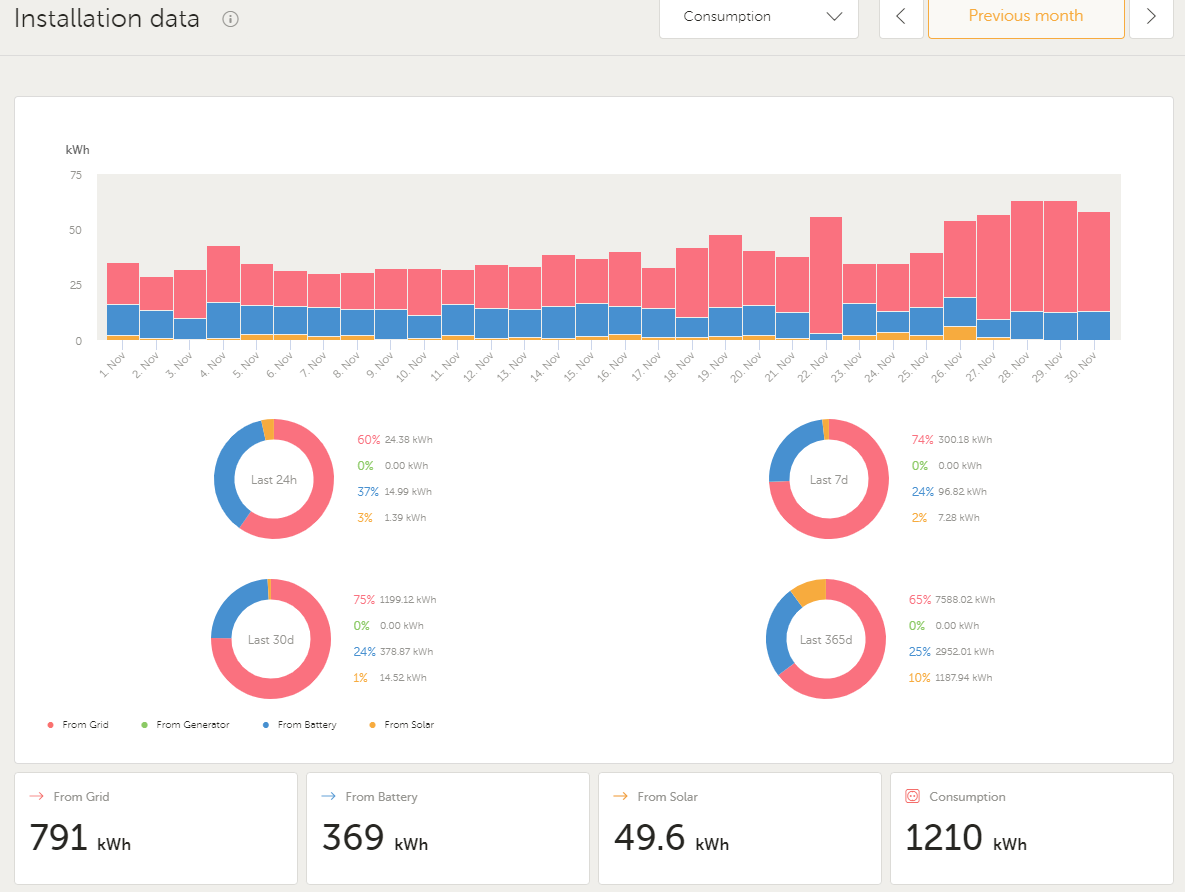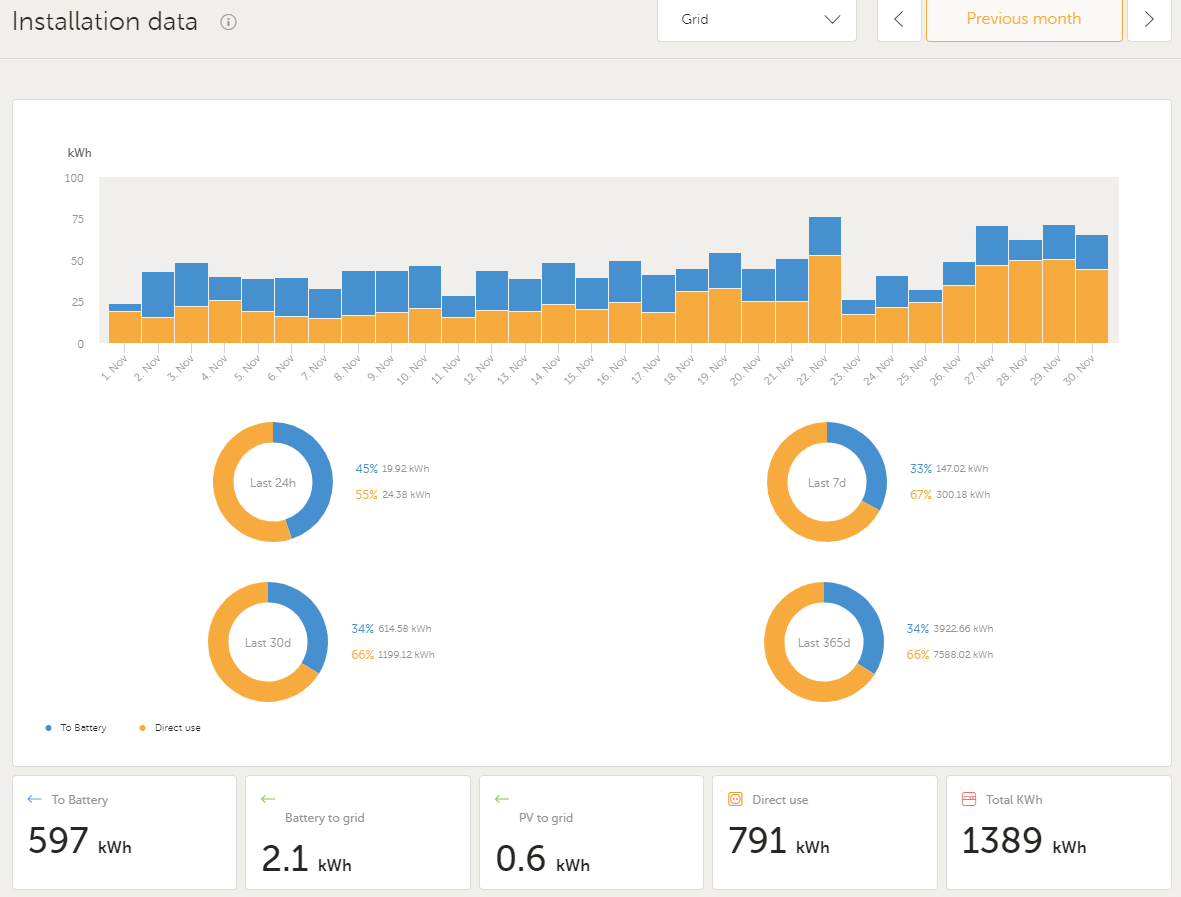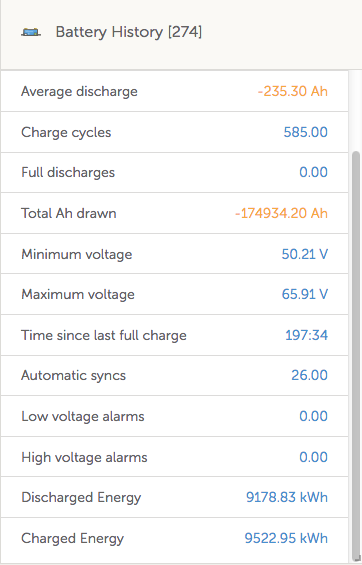Hi,
Started to look at my battery effeciency in VRM. I'm running a ESS system, last couple of months (November & December) there hasnt been any sun to talk about, and as such I'm running my system with charging the battery bank from grid during the 5 cheapest hours of the day and consuming the rest of the day.
My system is based on 3 phase Multiplus II 24/3000 with 8 pylontech UP2500 units for a total of approx 20 Kwh storage capacity. Coupled to this I have a small DC load constantly connected and a bunch of MPPTs. The DC load is connected over a SmartShunt so I know its draw. Everything connected to Lynx distribution boxes with its led indicators connected with the cable hack that circulates online.
When looking at VRM for last month it looks like this for Consumption
 And for GRID it looks like this
And for GRID it looks like this

If I take the To Battery value and subtract the From Battery value its 597 - 369 = 228 kWh that has gone into the battery bank but not come out over the previous month. Divide 228 by 30 and you get approx 7.6 kWh/day. The SmartShunt load is approx 2.5 amps constantly, thats 70-80W, lets say 100W to have a slight margin. Thats 2.4 kWh per day or 72 kWh for the whole month. If I subtract 72 from the 'missing' 228 its 156 kWh still unaccounted for. Thats 5.2 kWh per day or a total of 25% if the batterybank would have been fully charged each day - which it isnt due to other grid loads and not overloading the grid and limiting charging to 5 hours per day.
The only things connected is the MPPTs, DC load, 3*Multiplus II's & the Cerbo - so where is the fault? In VRM calculations, in Pylontech BMS reporting (if that is what Venus OS uses as base for To/From Battery) or does the MPPTs draw that much power when not used? My understanding is that Lithium batteries perhaps should have less than 10% loss on the charge cycle, or have I misunderstood it?
Anything else that I dont see / think about that can explain the difference in what goes into the batteries and comes out of them?
The figures for December is the same approx - I will check to make sure on monday when we're in January.
/Kaj

